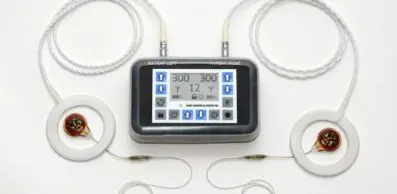3D printing is a family of processes that creates three-dimensional solid objects from a digital file using computer-aided design (CAD). Also known as additive manufacturing, 3D printing offers an extremely flexible way to produce complex shapes using less material than traditional manufacturing methods.
Over the last decade, 3D printing has played an increasingly important role in the medical device field—and with good reason. Not only does 3D printing allow device designers to more easily and cost-effectively make design changes without relying on additional equipment or tools, it also helps manufacturers produce devices with a high level of specificity (e.g., tailored to a patient’s anatomy).
3D printing and the medical device industry:
3D printing was first developed in the 1980s as a rapid prototype technique. Today, it is a vital tool in manufacturing across dozens of industries. In 2016, 3D printing in the medical device industry was worth $713.3M. By 2025, that number is expected to reach $3.5B.
The trend is growing—and it’s here to stay. Last year, during the first COVID surge, 3D printing was called upon to help ease shortages of vital PPE, ventilators, and even testing supplies, bringing even more attention to the groundbreaking technology.
Types of medical devices that use 3D printing:
The number of FDA-approved medical devices that rely on 3D printing continues to grow. Some of the more popular 3D printed medical devices include:
- Surgical instruments: From scalpel handles, forceps and retractors to medical clamps, needle drivers, hemostats and more, 3D printing is widely used for some of the less complex, less invasive surgical instruments.
- Orthopedic implants: With the ability to tailor implants to a specific patient with a unique trauma or degenerative disease, 3D printing has been game-changing in the field of orthopedics.
- Prosthetics: Similar to orthopedic implants, 3D printed prosthetics can also be customized to a patient’s anatomy—with a lighter, stronger end product.
- Anatomical models: 3D printing is widely used to print organ models to support patient education and pre-operative planning, which reduces the need for human and animal cadavers.
- Dental restorations: In the dental field, 3D printing allows practitioners to take a digital image of a patient’s mouth and design veneers, crowns or implants based on the patient’s jaw or tooth using CAD to create a 3D blueprint. The restoration is then produced while the patient waits.
Benefits of 3D printing for medical device companies:
3D printing presents a range of advantages that can benefit medical device manufacturing and prototype development. The additive manufacturing technology not only offers a more cost-effective way to design and develop devices at lower volumes, it also allows designers to easily manipulate and modify the design in a virtual space, speeds up test cycles and helps with material density control.
The benefits don’t end there. For doctors, 3D printing provides new tools that can support a higher standard of care, while patients are enjoying more personalized treatment and greater comfort from their 3D-printed medical devices.
Interestingly, 3D printing for medical devices is not limited to medical device manufacturers only. For example, last year, Print Parts, a provider of 3D printing performance parts and products, stepped up to fill a critical need in NYC for testing supplies—namely, nasal swabs for COVID tests. With Sterling by their side guiding the process, the NY-based 3D printing company produced FDA-compliant medical-grade swabs that are now in use in hospitals throughout the city.
For more information about how Sterling can help you use 3D printing for your next medical device, contact us here.


